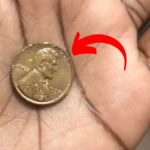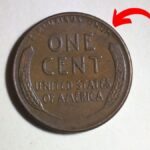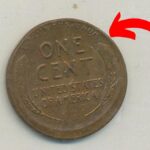The Lincoln Wheat Penny Valued at $88 Million: The Lincoln Wheat Penny, first minted in 1909, holds a special place in American numismatic history. Created to commemorate the 100th anniversary of Abraham Lincoln’s birth, this coin broke tradition by becoming the first U.S. coin to feature an actual historical figure rather than symbolic imagery. Designed by Victor David Brenner, the penny displayed Lincoln’s dignified profile on the front while the reverse featured two wheat stalks framing “ONE CENT” and “UNITED STATES OF AMERICA.” This iconic design remained in circulation until 1958, with billions produced during its nearly 50-year run.
From Pocket Change to Priceless Treasure
While most Lincoln Wheat Pennies you might find are worth only a few cents, certain rare specimens have captured the imagination of collectors worldwide. Stories of pennies potentially worth astronomical sums—some rumored to be valued as high as $88 million—continue to circulate among coin enthusiasts. Though such extreme valuations remain speculative, documented sales have shown that particular Wheat Pennies can indeed command impressive prices at auction, turning ordinary pocket change into life-changing discoveries.
The Rarest of the Rare
What makes certain Wheat Pennies so valuable? The answer lies in a combination of scarcity, historical significance, and condition. Among the most sought-after examples is the 1909-S VDB, featuring the designer’s initials and minted in limited quantities at the San Francisco Mint. The 1914-D represents another prized find due to its low mintage numbers. Perhaps most famous is the 1943 bronze penny—a mistake created when the Mint accidentally used bronze planchets instead of the steel ones mandated during World War II to conserve copper for the war effort.
Mistakes Worth Millions
In the world of coin collecting, errors often translate to extraordinary value. The speculated $88 million valuation likely refers to an exceptionally rare 1943 bronze penny in perfect, mint-state condition. While no public auction has confirmed a sale at this amount, such a coin would represent the perfect storm of numismatic value—combining extreme rarity, historical significance, and pristine preservation. Other valuable minting errors include double dies (where images appear doubled), off-center strikes, and wrong planchet errors where coins are struck on incorrect metal blanks.
Condition: The Critical Factor
The state of preservation dramatically affects a coin’s value. Professional grading services like PCGS (Professional Coin Grading Service) and NGC (Numismatic Guaranty Corporation) evaluate coins on a 70-point scale, with higher numbers indicating better condition. A worn 1943 bronze penny might sell for hundreds of thousands of dollars, while a pristine example could potentially fetch millions. Collectors prize coins with original luster, sharp details, and minimal wear—factors that can multiply value exponentially.
Finding Treasure in Plain Sight
What makes the Lincoln Wheat Penny story so captivating is the possibility that valuable specimens could still be hiding in plain sight. Remarkable discoveries continue to occur when people inherit old collections, purchase bank rolls for searching, or even receive unusual coins in their change. Garage sales, estate auctions, and flea markets occasionally yield treasures when sellers don’t recognize the value of what they possess. This accessibility transforms ordinary coin collecting into a genuine treasure hunt accessible to anyone.
Identifying a Valuable Wheat Penny
If you’re curious about your own collection, several key factors warrant attention. First, check the date and mint mark—look for rare years like 1909-S VDB, 1914-D, or 1943. For 1943 pennies, color matters significantly—most were made of steel that year, so a copper-colored example that doesn’t stick to a magnet could be extraordinarily valuable. Examine the coin for errors like doubled letters, off-center strikes, or unusual features. Finally, assess its condition—minimal wear suggests higher value.
Preserving Potential Treasure
Should you discover a potentially valuable penny, proper handling becomes crucial. Never clean the coin—even gentle wiping can damage the surface and dramatically reduce its value. Instead, place it in a protective holder and seek evaluation from a reputable coin dealer or professional grading service. The story of the Lincoln Wheat Penny reminds us that extraordinary value can hide in ordinary objects—making every handful of change a potential gateway to discovering American history and perhaps even a life-changing fortune.
Disclaimer: This article provides general information about coin collecting. Coin values fluctuate based on market conditions, and professional authentication is recommended before making any purchases or sales.



